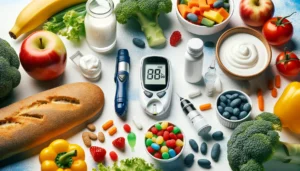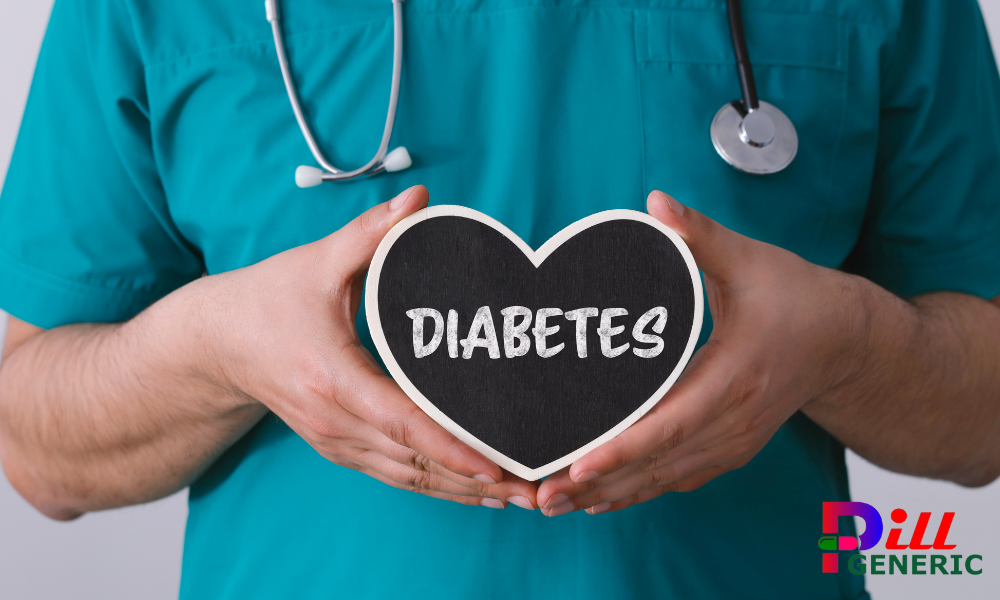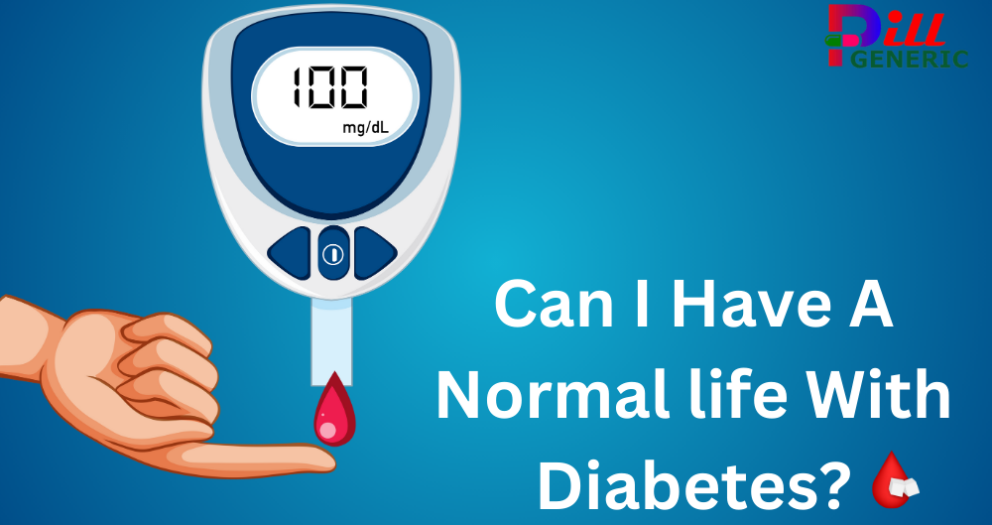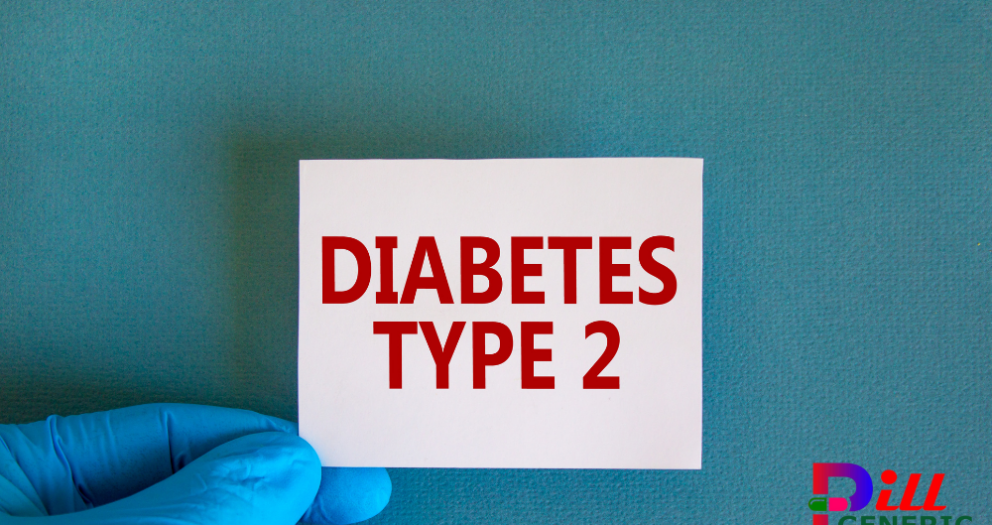Diabetes is a long-term medical condition that is typified by the high blood sugar levels.
This is due to either the insufficient production of insulin (a hormone that regulates the blood sugar) or the cells that do not respond to insulin as they should.
This consequently results in the accumulation of glucose in the bloodstream that causes a number of health problems.
In diabetes, the blood sugar level is high due to an insulin deficiency. Insulin is a pancreatic hormone that enables your body to decompose the glucose in the foods and transform it into the energy.
For a sufferer of Diabetes, the body is either not producing enough insulin, is not using the insulin well (Type 2 Diabetes), or is not producing any insulin at all (Type 1 Diabetes).
When you have diabetes, your body either does not produce enough insulin or it cannot properly use it.
If there is not enough insulin or the cells no longer respond to the insulin, the blood sugar remains in the bloodstream. However, in the long run, it may lead to severe medical issues, including heart failure, blindness, and also kidney failure.
Over time, having consistently high blood glucose can cause health problems, such as heart disease, nerve damage and eye issues.
The technical name for diabetes is diabetes mellitus. Another condition shares the term “diabetes” — diabetes insipidus — but they’re distinct.
They share the name “diabetes” because they both cause increased thirst and frequent urination. Diabetes insipidus is much rarer than diabetes mellitus.
Diabetes is a multifaceted metabolic disease that affects millions of people on the globe. It is very essential to understand the basics of this disease to appropriately control and also prevent its complications.
In this detailed guide, we explore what diabetes is, its many types, causes, symptoms, diagnosis, available treatment, and prevention options.
Types Of Diabetes
There are several types of diabetes, including:
1. Type 1 Diabetes
Type 1 diabetes is an autoimmune disease that causes the immune system to mistakenly attack and destroy the beta cells that produce the insulin in the pancreas. This leads to minimal, if any, insulin production necessitating a lifelong insulin therapy.
2. Type 2 Diabetes
Type 2 diabetes is the most prevalent form of the diabetes and it accounts for the most cases globally.
It is usually seen in adults but it is more and more often seen in children and adolescents because of obesity. In type 2 diabetes, the body becomes very resistant to the insulin or does not produce enough insulin to keep the blood glucose levels normal.
3. Gestational Diabetes
Gestational diabetes occurs when pregnant women do not have sufficient insulin to meet the increased demand the body has.
Even though it is generally resolved after the delivery, women who have developed gestational diabetes are much more likely to get type 2 diabetes later in the life.
What Causes Diabetes?
Whether it is type 1 or type 2, diabetes is caused by an excessive level of glucose in the blood. But the main cause of your high blood glucose levels varies with the type of diabetes.
Causes of diabetes include:
Insulin resistance: Insulin resistance is the main cause of the type 2 diabetes. Insulin resistance occurs when your muscle, fat and also liver cells do not respond to the insulin as they should. Various factors and circumstances lead to the different levels of insulin resistance, such as obesity, inactivity, diet, hormone imbalances, genetics, and also some medications.
Autoimmune disease: Type 1 diabetes and LADA occur due to an attack by the immune system on the insulin-producing cells in the pancreas.
Hormonal imbalances: In pregnancy, the placenta secretes many hormones that lead to the insulin resistance.
If your pancreas fails to generate enough insulin to counteract the insulin resistance, then you may develop the gestational diabetes. Other hormone-related diseases such as acromegaly and also Cushing syndrome may also lead to the Type 2 diabetes.
Pancreatic damage: Any form of physical damage to your pancreas including by a disease, surgery or any injury that affects its ability to produce insulin results in Type 3c diabetes.
Genetic mutations: MODY and neonatal diabetes are caused by some of genetic mutations.
HIV/AIDS medications and corticosteroids are some of the medicinal drugs that may cause Type 2 diabetes from the long-term use.
Risk Factors
The risk factors for diabetes vary depending on the type of the diabetes. Family history may contribute to all of them. Environmental factors and also geography can increase the risk of type 1 diabetes.
In some cases, family members of those with type 1 diabetes are also screened for the autoantibodies.
Having these autoantibodies, you have a higher chance of developing the type 1 diabetes. However, not all the people with these autoantibodies develop the diabetes.
Other risk factors for type 2 diabetes include the race or the ethnicity. While it is not clear why, some individuals — including African, Hispanic, American Indian, and also Asian American people — are at an increased risk.
Overweight or obese people are more prone to the prediabetes, type 2 diabetes and also gestational diabetes.
How Is Diabetes Managed?
Since diabetes is a very complicated disorder, its treatment includes a large number of approaches. Moreover, the management of diabetes is highly individualized due to the fact that it affects each individual person in a different way.
The four main aspects of managing diabetes include:
Blood sugar monitoring:
The glucose level is very crucial in determining how well the current treatment plan is working. It provides you with guidance on how to control your diabetes on a daily or sometimes even on a hourly level.
Frequent glucose monitoring with a glucose meter and finger stick and/or also with a continuous glucose monitor (CGM) can help keep your glucose levels under control. The blood sugar range that will best suit you will be agreed upon by you and also your healthcare provider.
Oral diabetes medications:
Oral anti-diabetic drugs treat diabetes in patients who produce some insulin. They are used for type 2 diabetes and prediabetes. People with GD may need to take oral medication. There are many kinds, but metformin is the most popular.
Insulin:
Type 1 diabetic patients have to administer the synthetic insulin in order to survive and control the diabetes. Insulin is also needed by some Type 2 diabetes patients.
Various types of man-made insulin exist. They begin to act with different rates and stay in your system for different periods of time.
The four major types of insulin include insulin injection using a syringe (shot), insulin pens, insulin pumps and also rapid-acting inhaled insulin.
Diet:
The management of diabetes involves meal planning and the selection of a diet appropriate for you because what you eat really influences the blood sugar.
Counting carbs in the food and drinks that you consume is a very big part of the management if you are taking insulin.
The number of carbs you consume determines the insulin dose that is required at the meals.
Exercise:
Physical activity increases insulin sensitivity (and helps reduce insulin resistance), so regular exercise is an important part of management for all people with diabetes.
Due to the increased risk for heart disease, it’s also important to maintain a healthy:
- Weight.
- Blood pressure.
- Cholesterol.

Other Types Of Diabetes
A rare form of diabetes, known as monogenic diabetes, is caused by a mutation in a single gene. Diabetes can also result from the pancreatic surgery or from pancreatic damage due to such conditions as cystic fibrosis NIH external link or pancreatitis.
What Other Comorbidities Can The People With Diabetes Have?
In the long term, high blood glucose can affect your heart, kidneys, feet, and also eyes.
When you have diabetes, you can do something to reduce the likelihood of diabetes complications by doing something about the health and learning how to manage the disease.
Blood glucose, the blood pressure, and also cholesterol management can help in the prevention of future health complications.
Symptoms of Diabetes
Despite the fact that these 2 types of diabetes are quite different in their causes, some of the symptoms between the two may overlap each other. Some of these common symptoms include:
- Extreme increase in hunger
- Unintended weight loss
- Blurred vision
- Frequent urination
- Fatigue
- Extreme thirst
- Mood Swings
- Irritability
There is one distinct difference in how symptoms actually appear: In Type 1 Diabetes symptoms can come on very quickly, whereas in Type 2 Diabetes the symptoms will develop more slowly and gradually and may not become apparent for many years.





Great article! I appreciate the clear explanation of diabetes and its types. It’s so important to raise awareness about this condition.
I’ve been looking for ways to prevent diabetes, and this article provides a comprehensive guide. From diet to exercise and stress management, it covers all the essential aspects. Thank you for sharing!
I wonder if there are any specific supplements or vitamins that can support diabetes prevention. It would be interesting to explore that aspect further.
Overall, I found this article to be really insightful and motivating. It’s a great reminder that we have the power to take control of our health through simple lifestyle changes. Thank you for sharing this information!